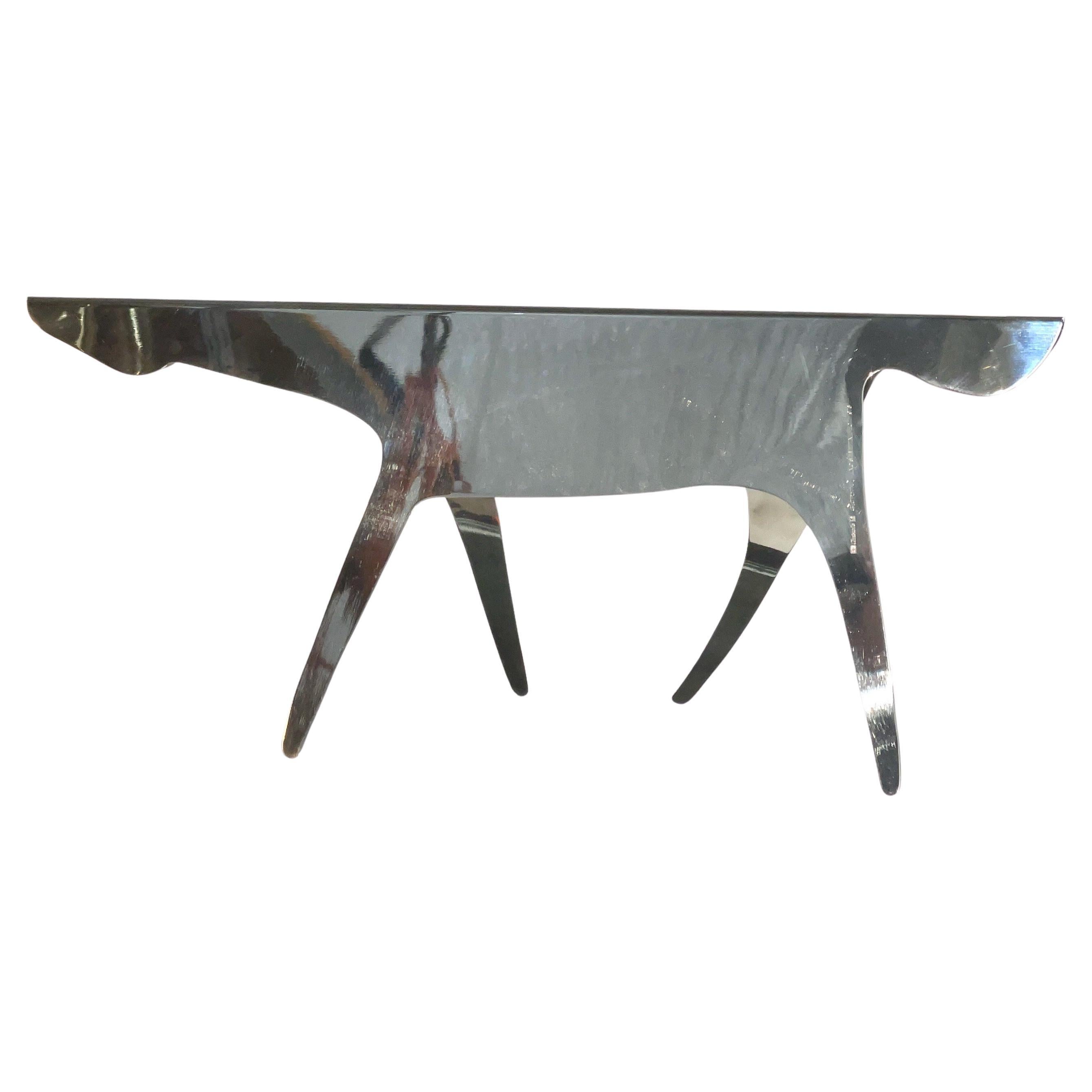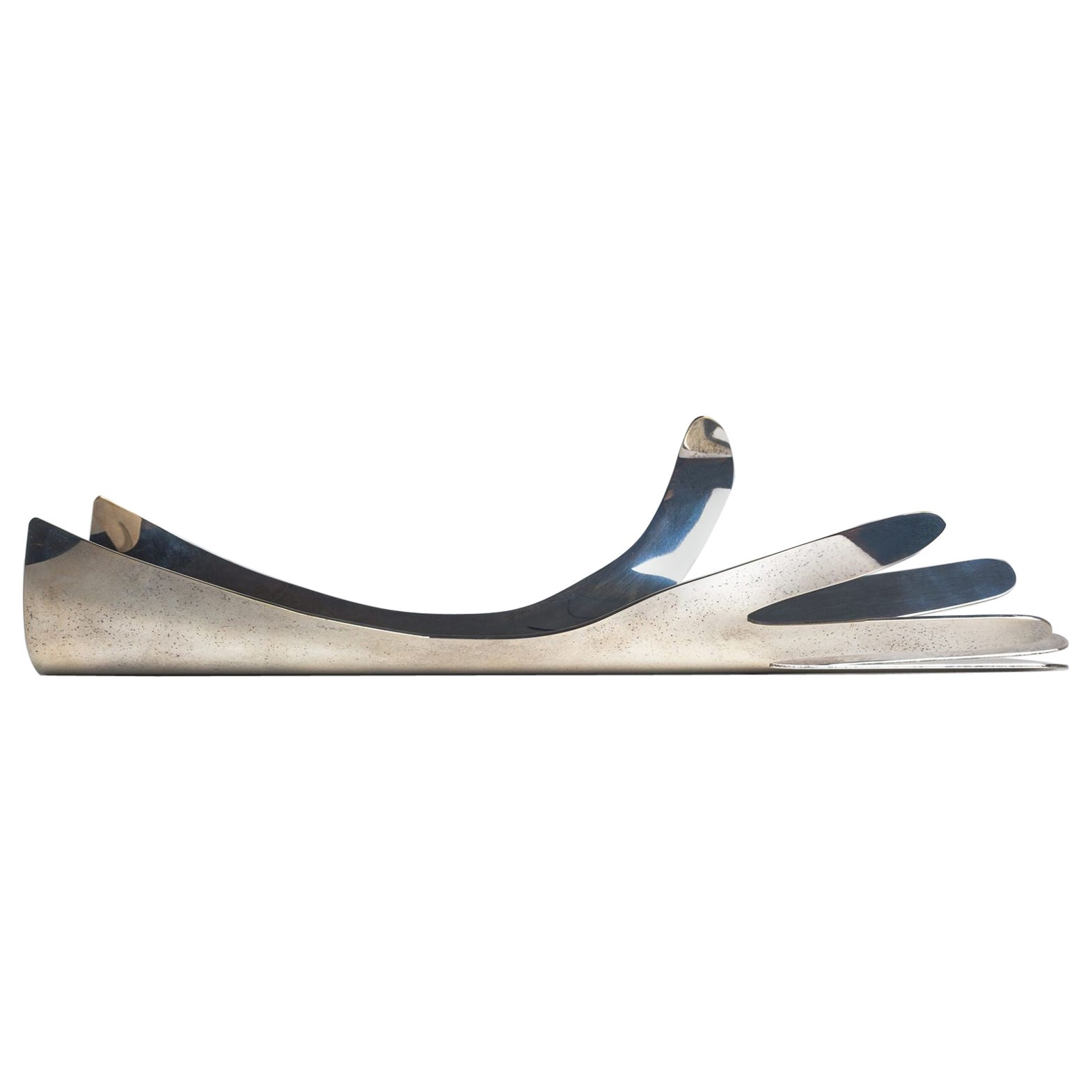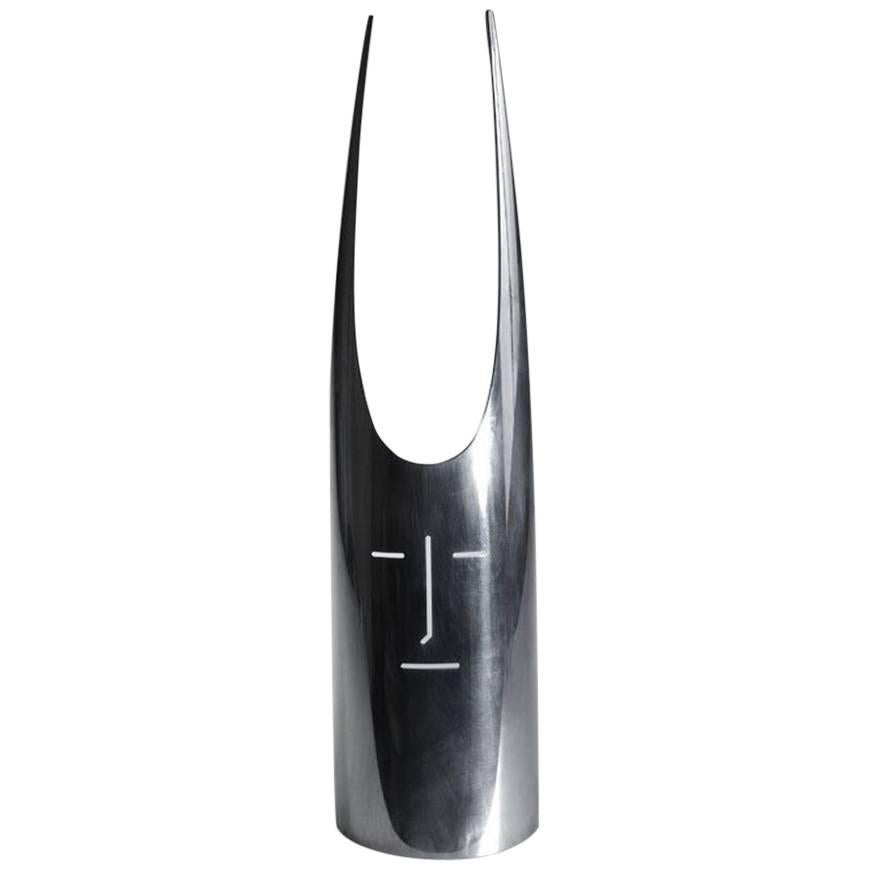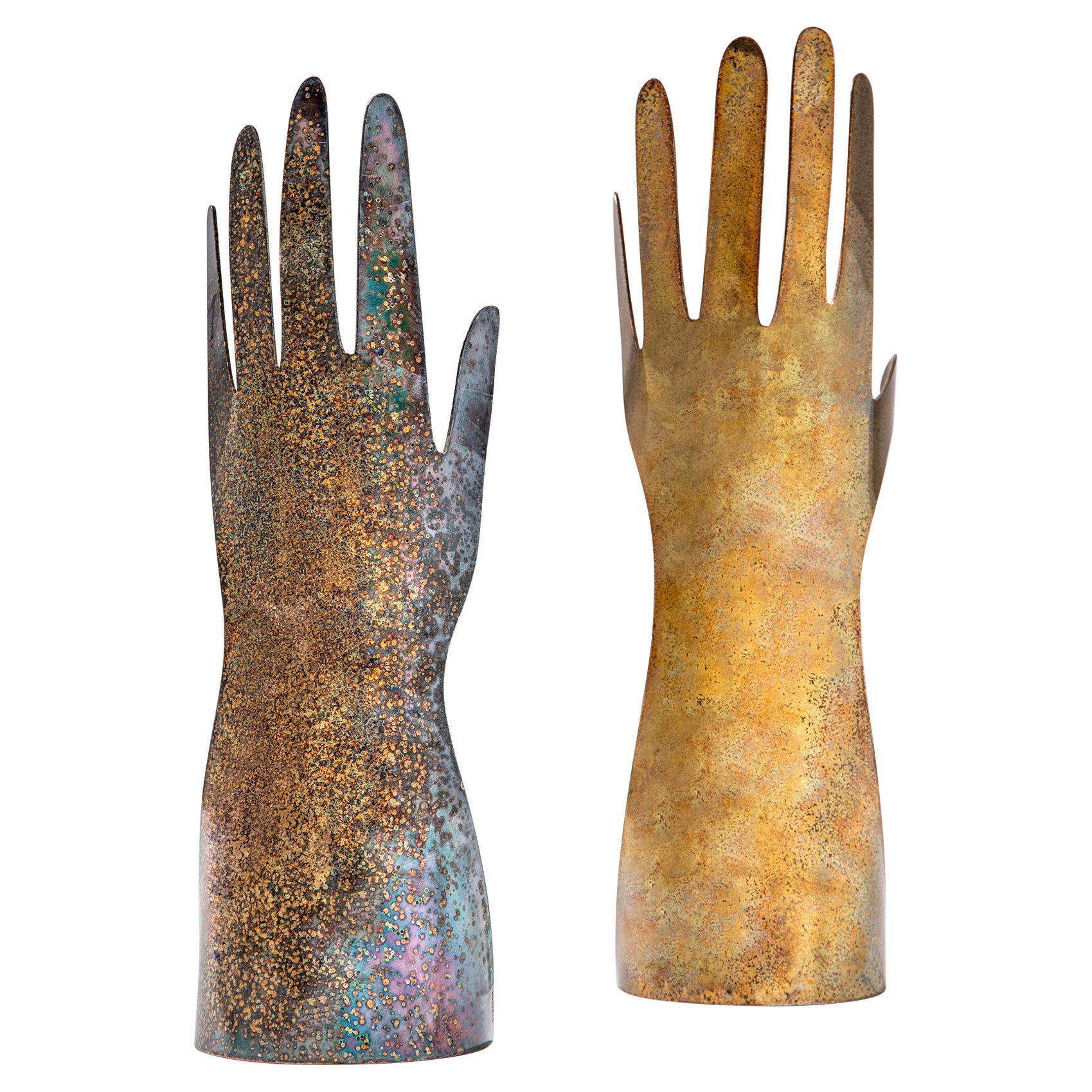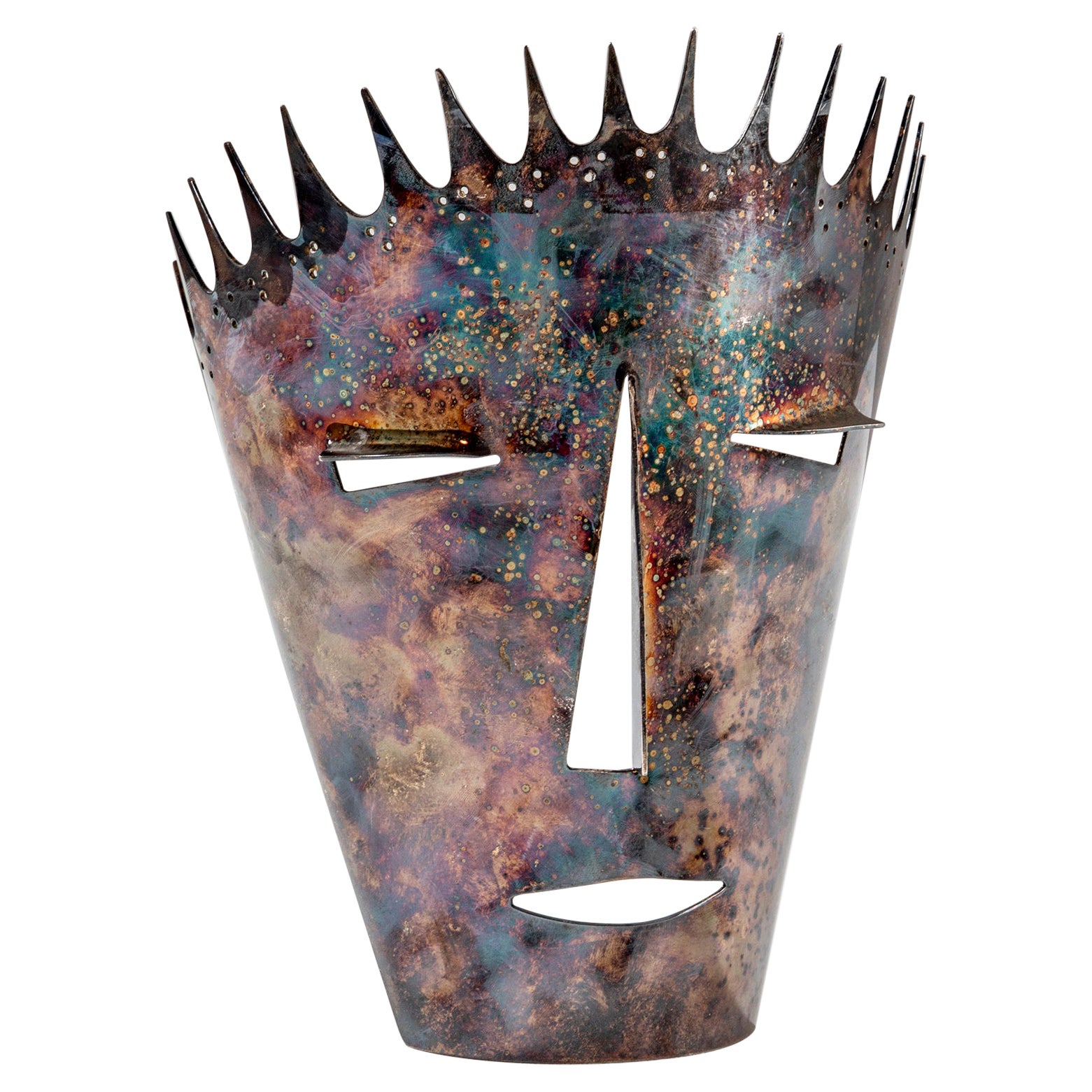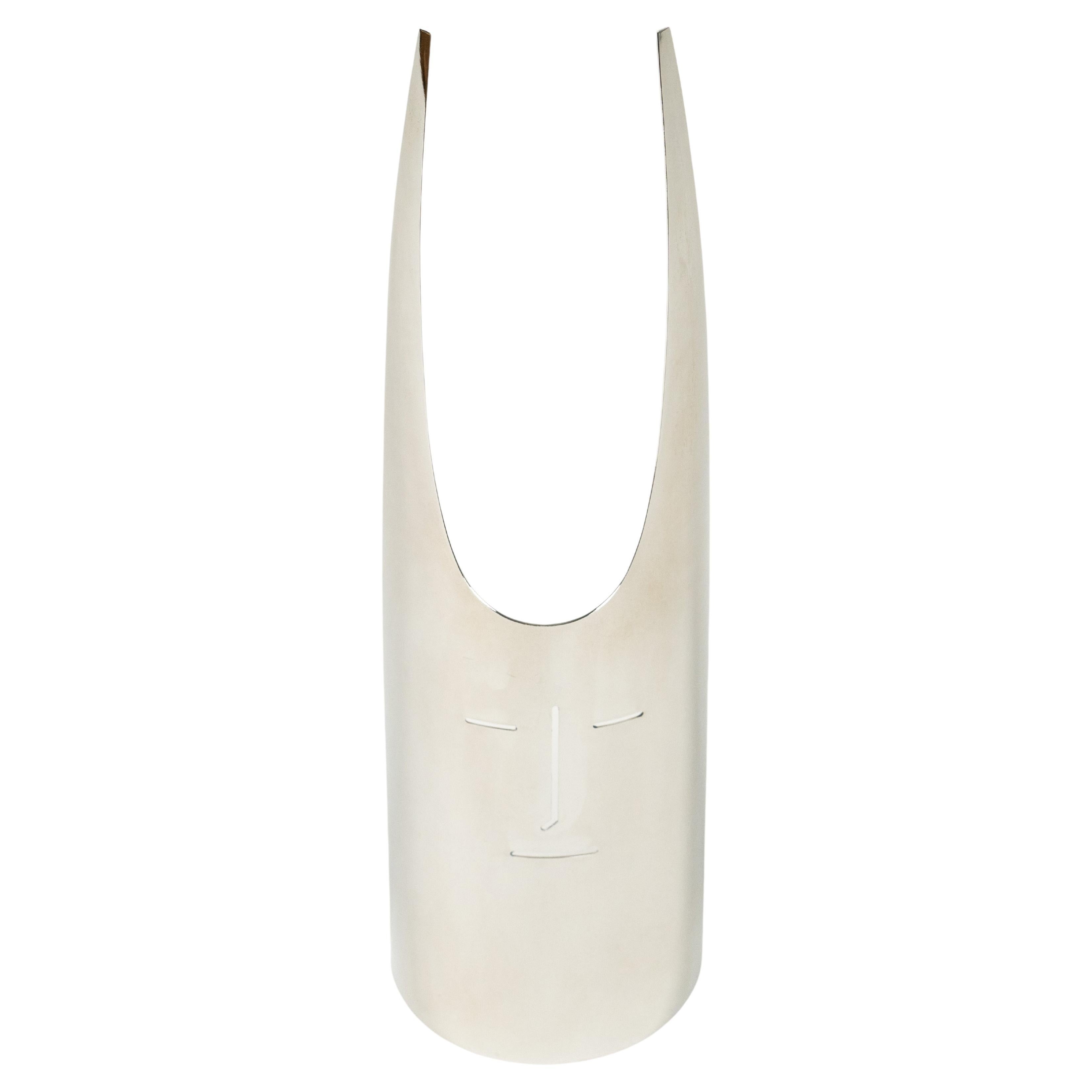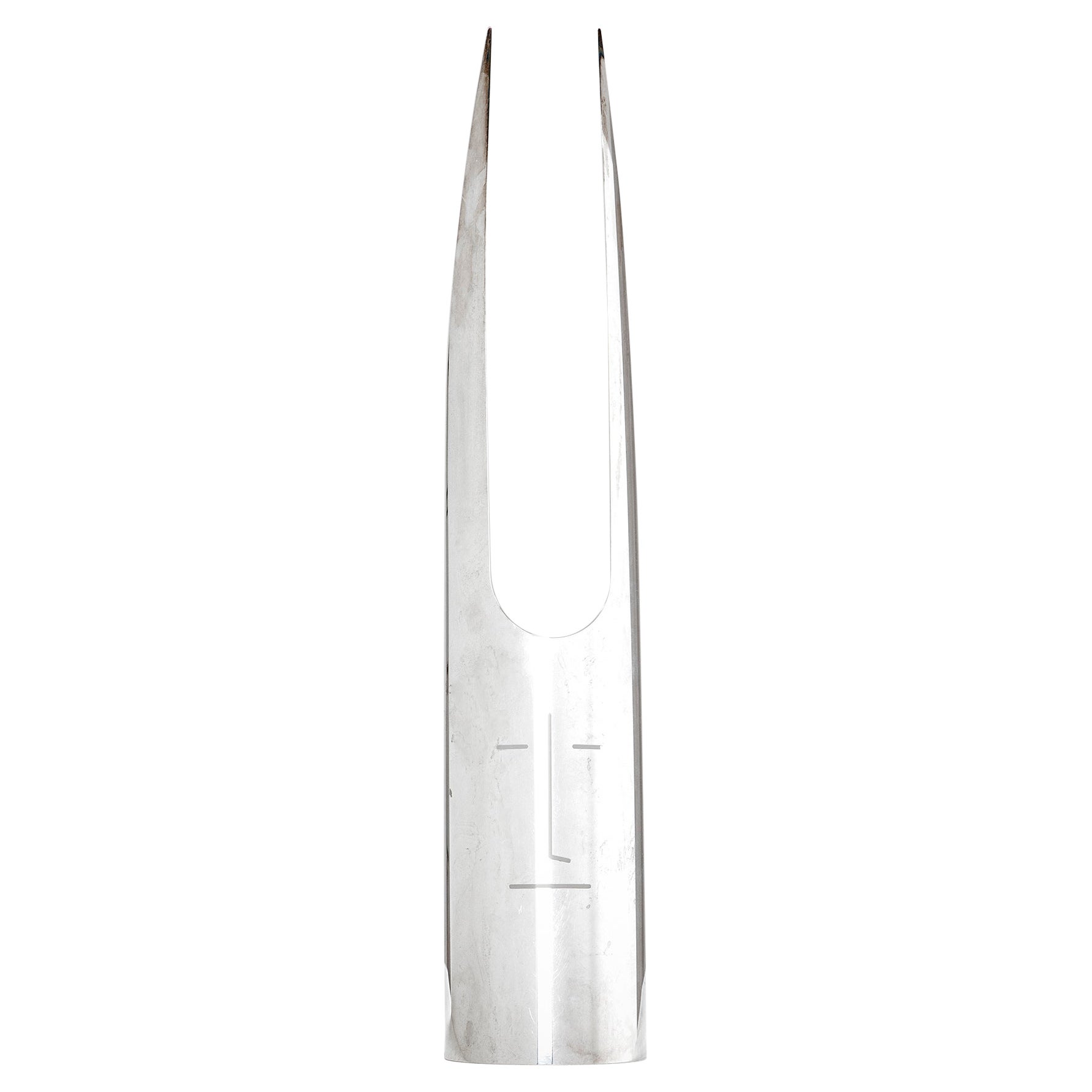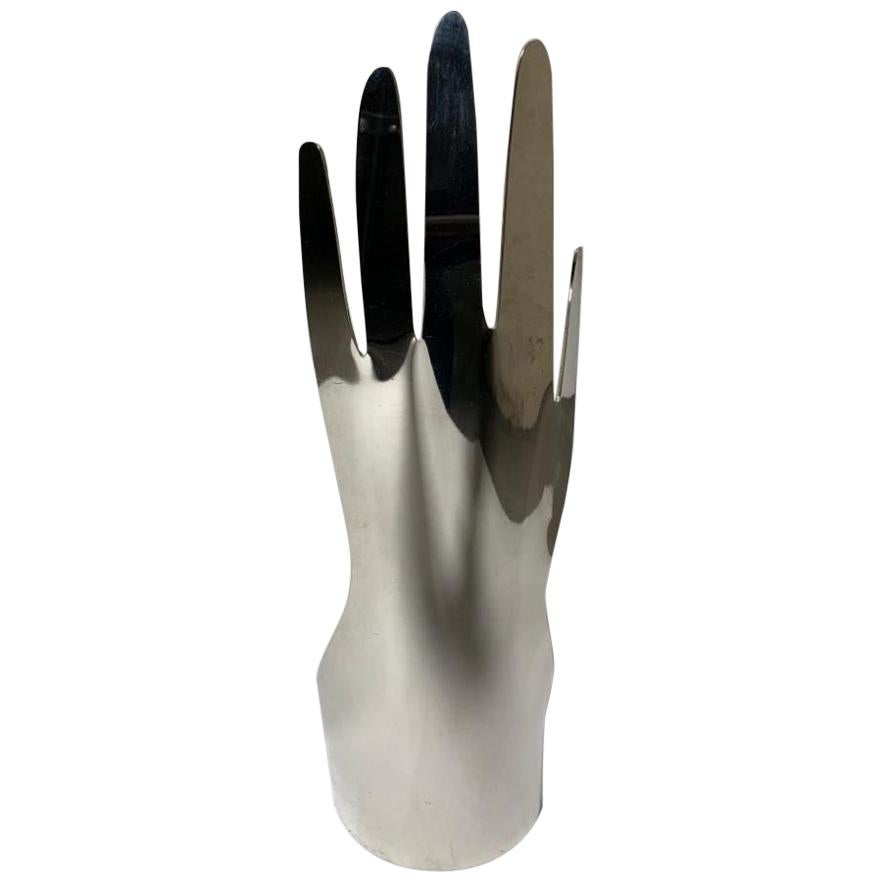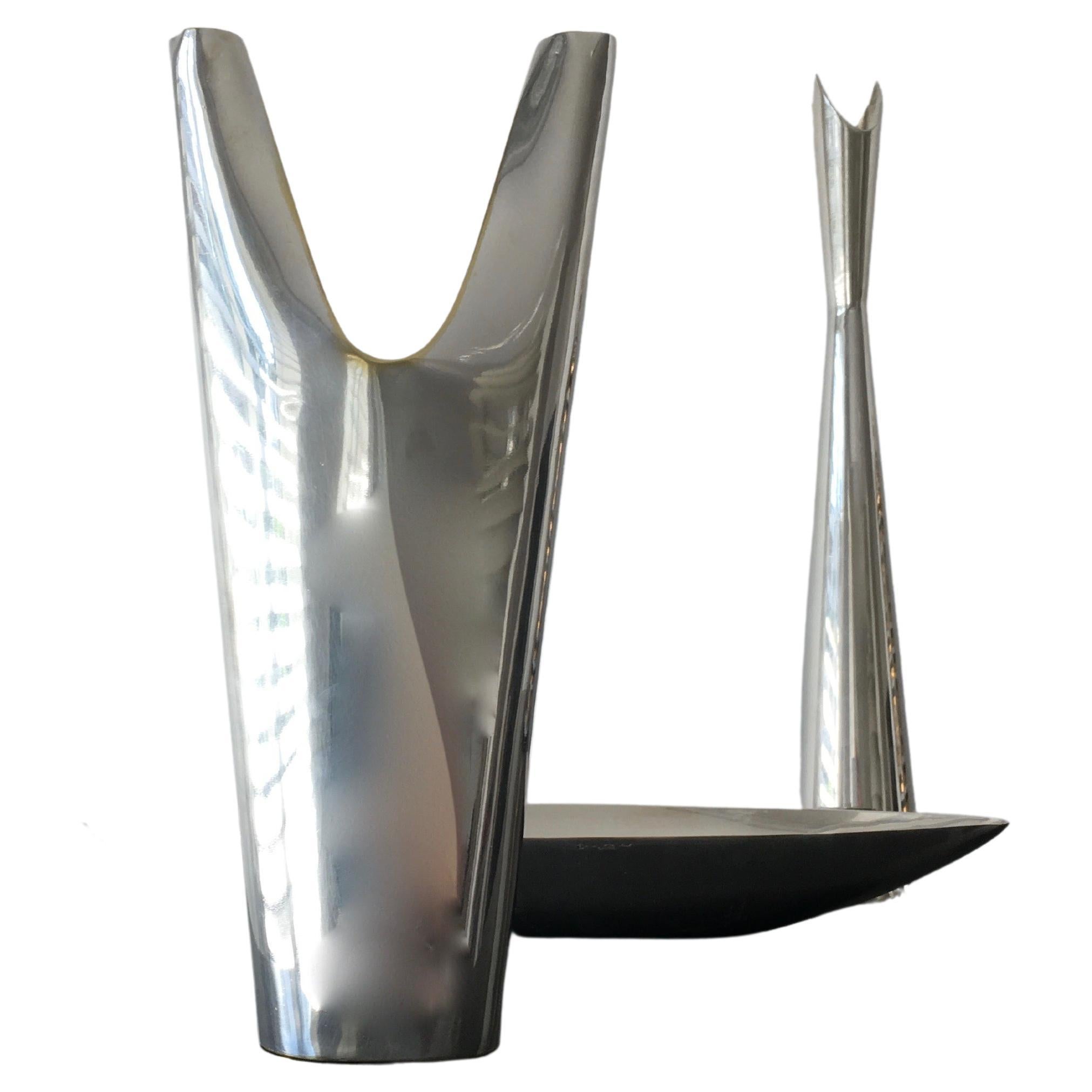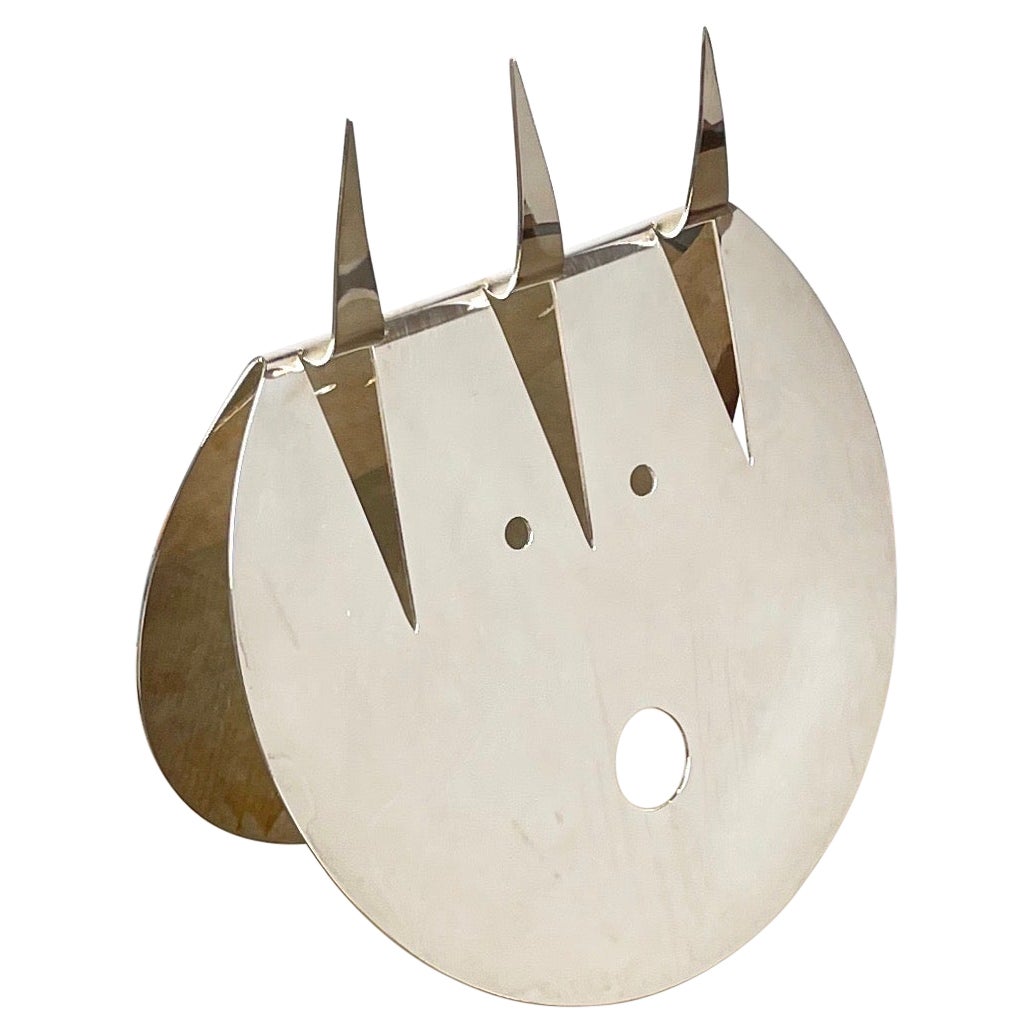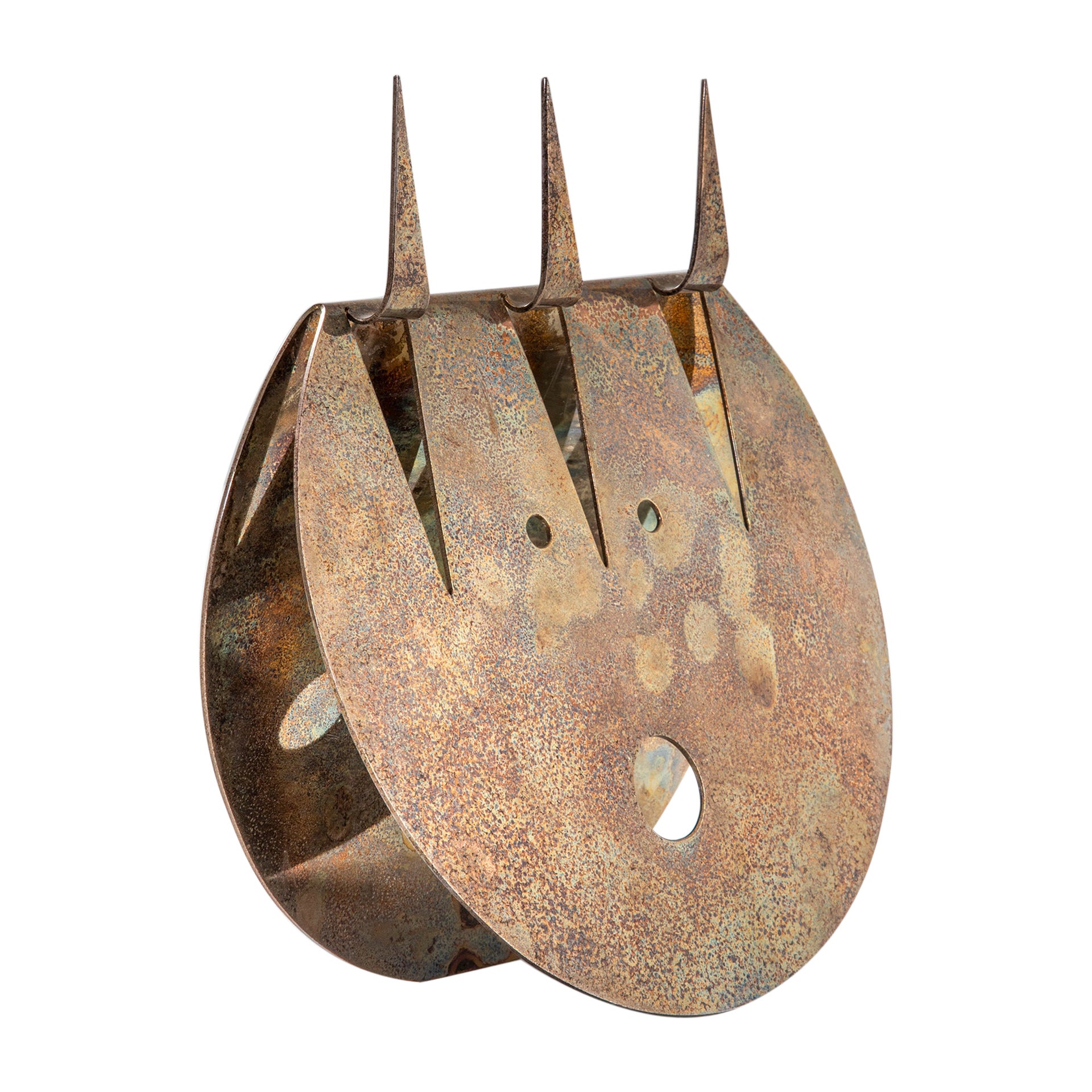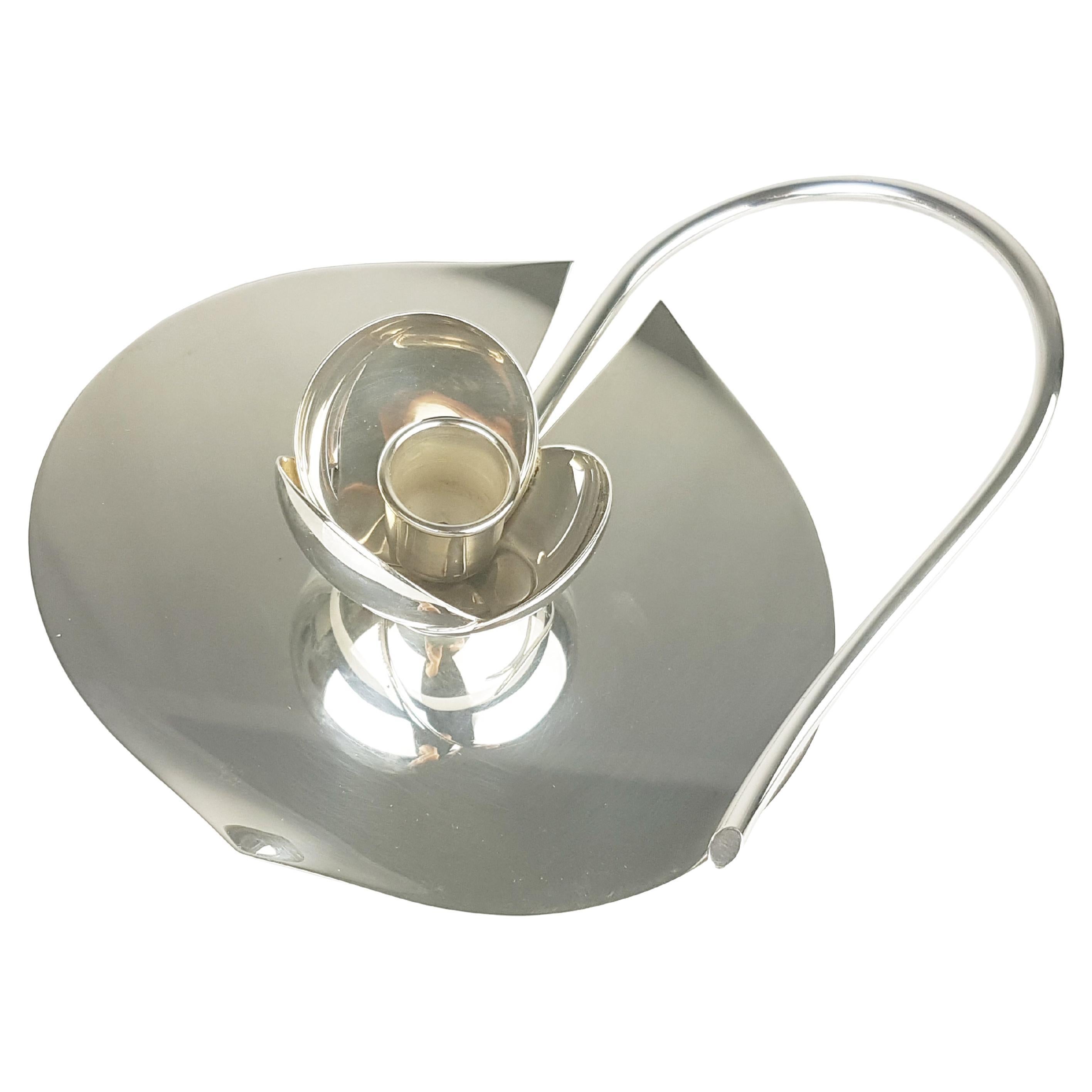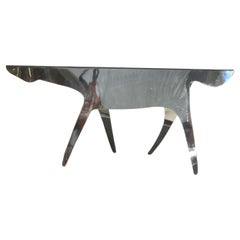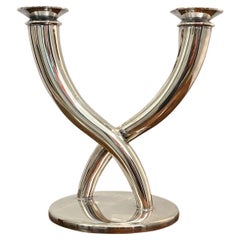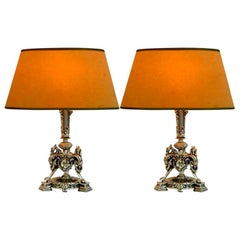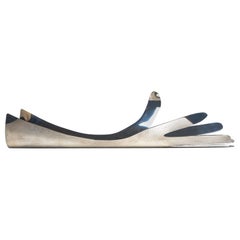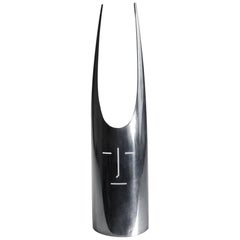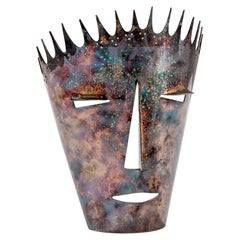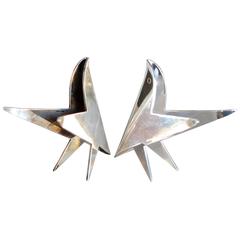
Pair of Gio Ponti "Uccelli" Silver Sculptures by Lino Sabattini for Christofle
View Similar Items
Pair of Gio Ponti "Uccelli" Silver Sculptures by Lino Sabattini for Christofle
About the Item
- Creator:
- Dimensions:Height: 4 in (10.16 cm)Width: 4.75 in (12.07 cm)Depth: 2.5 in (6.35 cm)
- Sold As:Set of 2
- Style:Mid-Century Modern (Of the Period)
- Materials and Techniques:
- Place of Origin:
- Period:
- Date of Manufacture:1978
- Condition:Wear consistent with age and use.
- Seller Location:Hanover, MA
- Reference Number:1stDibs: LU88666279843
Gio Ponti
An architect, furniture and industrial designer and editor, Gio Ponti was arguably the most influential figure in 20th-century Italian modernism.
Ponti designed thousands of furnishings and products — from cabinets, mirrors and chairs to ceramics and coffeemakers — and his buildings, including the brawny Pirelli Tower (1956) in his native Milan, and the castle-like Denver Art Museum (1971), were erected in 14 countries. Through Domus, the magazine he founded in 1928, Ponti brought attention to virtually every significant movement and creator in the spheres of modern art and design.
The questing intelligence Ponti brought to Domus is reflected in his work: as protean as he was prolific, Ponti’s style can’t be pegged to a specific genre.
In the 1920s, as artistic director for the Tuscan porcelain maker Richard Ginori, he fused old and new; his ceramic forms were modern, but decorated with motifs from Roman antiquity. In pre-war Italy, modernist design was encouraged, and after the conflict, Ponti — along with designers such as Carlo Mollino, Franco Albini, Marco Zanuso — found a receptive audience for their novel, idiosyncratic work. Ponti’s typical furniture forms from the period, such as the wedge-shaped Distex chair, are simple, gently angular, and colorful; equally elegant and functional. In the 1960s and ’70s, Ponti’s style evolved again as he explored biomorphic shapes, and embraced the expressive, experimental designs of Ettore Sottsass Jr., Joe Colombo and others.
Ponti's signature furniture piece — the one by which he is represented in the collections of the Museum of Modern Art in New York, Germany’s Vitra Design Museum and elsewhere — is the sleek Superleggera chair, produced by Cassina starting in 1957. (The name translates as “superlightweight” — advertisements featured a model lifting it with one finger.)
Ponti had a playful side, best shown in a collaboration he began in the late 1940s with the graphic artist Piero Fornasetti. Ponti furnishings were decorated with bright finishes and Fornasetti's whimsical lithographic transfer prints of things such as butterflies, birds or flowers; the Montreal Museum of Fine Arts possesses a 1950 secretary from their Architetturra series, which feature case pieces covered in images of building interiors and facades. The grandest project Ponti and Fornasetti undertook, however, lies on the floor of the Atlantic Ocean: the interiors of the luxury liner Andrea Doria, which sank in 1956.
Widely praised retrospectives at the Queens Museum of Art in 2001 and at the Design Museum London in 2002 sparked a renewed interest in Ponti among modern design aficionados. (Marco Romanelli’s monograph, which was written for the London show, offers a fine overview of Ponti’s work.) Today, a wide array of Ponti’s designs are snapped up by savvy collectors who want to give their homes a touch of Italian panache and effortless chic.
Find a range of vintage Gio Ponti desks, dining chairs, coffee tables and other furniture on 1stDibs.
Lino Sabattini
Lino Sabattini was the preeminent figure in modern Italian silver and metalware design. His expansive and diverse body of work is marked by its strength and boldness, whether in dynamic forms that suggest the thrust and power of Italian Futurist art and design or light and curvaceous biomorphic serveware and decorative objects.
Sabattini was largely self-taught as a designer. Born in the northern Italian town of Correggio, he learned metalsmithing techniques while working in the studio of a maker of brass tableware. He also served as an apprentice of sorts to the expatriate German ceramist Roland Hettner, who taught Sabattini about fluidity of form and showed him how shapes derive from the behavior of materials.
At age 30, Sabattini opened a studio in Milan, and his work quickly came to the attention of Gio Ponti, who decided to publish it in Domus, the Italian design legend's influential design and architecture magazine. Ponti also arranged for Sabattini’s creations to be included in a 1956 exhibition of contemporary Italian design in Paris. The principals of Christofle, the revered French silverware maker, were so impressed that they hired the young designer as the firm’s artistic director, a post he held until 1963. Sabattini, who would also go on to design ceramic wares for Rosenthal, returned home to open Argenteria Sabattini in Bregnano, a company still in business today.
A designer with a questing curiosity and ever-evolving aesthetic sensibility, Sabattini couldn’t be pinned down to one particular style. His best-known work, the Como coffee and tea service of 1956, has an elegant, attenuated and energetic form; his Stairs coffee and tea service (1971), meanwhile, is a clever group of simple columnar shapes in stepped heights, which nest together in a compact arrangement. Other Sabattini pieces have dramatic angles, or sweeping, wing-like flourishes, or consist of perforated ovoids somehow reminiscent of sculptures by Brancusi. In any style, Sabattini produced objects of singular fascination.
Find a range of vintage Lino Sabattini vases and other decorative objects on 1stDibs.
More From This Seller
View AllVintage 1970s Italian Mid-Century Modern Animal Sculptures
Silver Plate
Vintage 1980s French Art Deco Sheffield and Silverplate
Silver Plate
Vintage 1950s French Art Deco Table Lamps
Pewter
Antique 19th Century English Neoclassical Table Lamps
Nickel
Vintage 1980s Italian Post-Modern Sheffield and Silverplate
Silver Plate, Brass
Vintage 1940s Italian Mid-Century Modern Wall Lights and Sconces
Aluminum, Brass
You May Also Like
Vintage 1970s Italian Mid-Century Modern Figurative Sculptures
Metal, Silver Plate
Vintage 1970s Italian Modern Figurative Sculptures
Metal
Vintage 1970s Italian Mid-Century Modern Busts
Metal
Vintage 1970s Italian Mid-Century Modern Busts
Metal
Vintage 1970s Italian Mid-Century Modern Figurative Sculptures
Metal
Vintage 1970s Italian Mid-Century Modern Busts
Metal
Recently Viewed
View AllRead More
Barnaba Fornasetti’s Hallucinatory House Has His Father’s Spirit
Behind a nondescript facade in northeastern Milan is the magical residence of Barnaba Fornasetti. It's a shrine to the style developed by his design-legend father, which still defies categorization.
Billy Cotton Layers His Interiors with Lived-In Comfort
The Brooklyn-based designer is adept at styles ranging from austere to over-the-top, espousing an architectural, detail-oriented approach also evident in his line of furniture and lighting.
